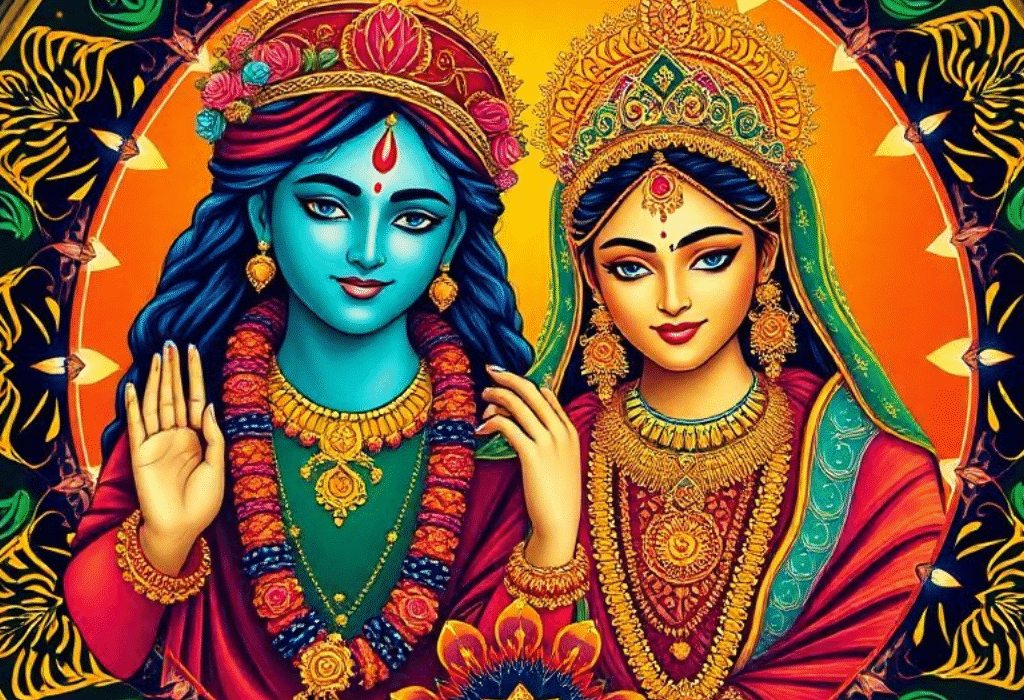
Radha Krishna Mandala Art
Introduction
Mandala art holds a special place in spiritual and cultural traditions worldwide. It serves as a tool for meditation, healing, and connecting with higher consciousness. Among the many mandalas, the Radha Krishna mandala art stands out for its deep symbolism and vibrant beauty.
Radha and Krishna are beloved figures in Hindu devotion. Their images symbolize divine love, harmony, and spiritual bliss. Today, Radha Krishna mandala art is gaining popularity not just for its spiritual power but also as a beautiful decorative piece.
What is Mandala Art?
Mandalas are intricate geometric patterns that symbolize the universe. They have been used in many spiritual traditions like Hinduism, Buddhism, and Jainism. These circular designs often feature symmetrical shapes and repeating motifs.
Mandalas serve as aids for meditation, helping focus the mind. They also promote healing by aligning energy centers or chakras within the body. Common elements include circles, geometric patterns, lotus flowers, and sacred symbols.
The Significance of Radha and Krishna in Art
Radha and Krishna’s story is central to Hindu devotion. Krishna appears as a divine child and hero, and Radha is his beloved soulmate. Their bond represents ultimate love and devotion beyond physical relationships.
In art, Radha and Krishna symbolize divine love and unity. Their images are often depicted with symbols like peacock feathers and flutes, signifying beauty and harmony. When incorporated into mandalas, these symbols deepen the spiritual connection.
Historical and Cultural Context Roots of Mandala Art in Indian Culture
Mandalas have a long history in Indian culture. They appear in Hindu temples, paintings, and rituals dating back thousands of years. Mandala patterns were often used in sacred architecture to connect the physical space with the spiritual.
In Buddhism and Jainism, mandalas are used for meditation and spiritual practice. Over centuries, these designs evolved, blending artistic styles and spiritual meanings. They remain a core part of spiritual practices and rituals.
Radha Krishna in Artistic Traditions
Classic Radha Krishna art can be found in detailed sculptures, paintings, and temple murals. Artists across India created different styles, from Rajasthani miniatures to Mughal-influenced art and South Indian temple murals. Each style reflects local culture while preserving core symbols.
Modern artists reinterpret Radha-Krishna images, making them more vibrant and accessible. This keeps the tradition alive and relevant for a new generation of spiritual seekers.
Core Symbols and Their Meanings
Many symbols make the Radha Krishna mandalas rich in meaning. The lotus flower, for instance, symbolises purity and spiritual awakening. Peacocks represent beauty and divine grace. The flute signifies bliss and divine music.
Colours also carry significance. Blues symbolise Krishna’s divine nature. Pink and red are linked to love and passion. Gold reflects spiritual light and enlightenment. These elements combine to create a harmonious visual that guides meditation.
Key Takeaways
Radha Krishna mandala art is more than pretty pictures. It embodies spiritual love, unity, and cultural history. Understanding the symbols adds depth to your practice or creation. Whether for meditation or decoration, this art form helps connect us with divine harmony.
Explore your creative side by incorporating Radha Krishna mandalas into your spiritual journey. This art can inspire peace, love, and inner growth every time you work on or admire it.
Conclusion
Discover the divine beauty of Radha-Krishna mandala art and let it inspire your spiritual path. Whether you create or simply admire, these designs carry powerful symbols of love, harmony, and devotion. Start exploring today and experience their timeless magic.
